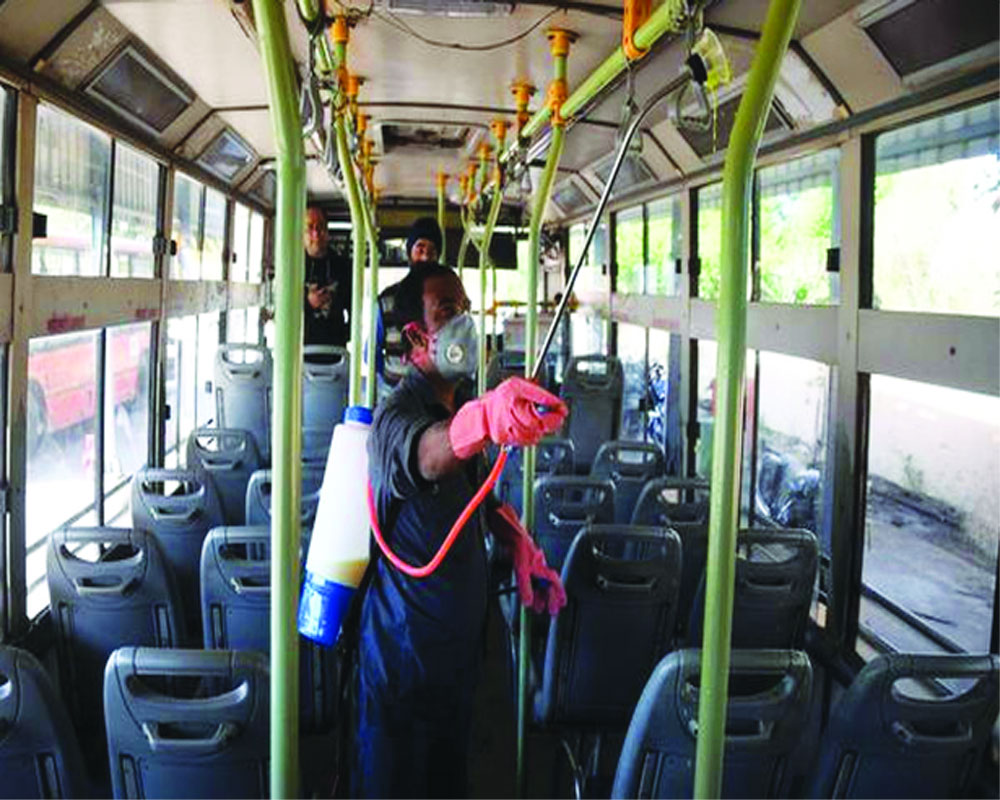Delhi Govt proposes a doable and safe resumption of public transport, adapting from templates in virus-hit nations
It is by now clear that a post-COVID world is bound to undergo drastic changes and life will never be the same as before. It will have to be more need-based, mindful, resource-conscious and, therefore, balanced. And in the absence of a vaccine or cure, a behavioural and hygiene discipline like never before is the only preventive. With nations across the world contemplating the best ways to outline a safe exit plan, India’s challenge for lockdown 4 with easing of protocols is even bigger. For despite one of the world’s severest containment drills, the density of our population and our clustered existence have meant that cases have been spiking with a wildfire rapidity and we may end up being one of the worst virus-hit nations. Yet given our size, our economy is gasping because of the lockdown and the reverse migration of labour back to the villages has meant that a human tragedy has taken over public health exigencies. So India’s exit plan has to balance both crises besides grading and scaling both the outbreak and the economy. This is where the Delhi Government has taken the lead by emphasising the need for a safe resumption of the public transport system among other things as it is the lifeblood of an economy; people need to move to their place of work. But it is also a fact that modes of mass transport in India till now have been mostly overloaded and unhygienic given general public habits. Closed spaces inside metros and buses would mean limited ventilation and could pose a risk to passengers and even frontline workers — drivers, cleaning staff and security personnel. As a matter of fact, buses, local trains and metros were all designed to operate at high densities. Before COVID-19, the Delhi Metro alone used to ferry 1.5 million passengers and the Delhi Transport Corporation (DTC) about 20-25 lakh commuters per day. So imagine the extent of livelihoods affected in the absence of such systems. The Delhi Government proposes to limit the number of passengers on buses to 20 and run cluster fleet buses during peak hours. Metros, too, would run with at least one-third capacity with social distancing norms in place. Cleaning and sanitisation of the Metros and buses after they complete one full trip is to be made mandatory. All this means a digitally robust passenger information system and a 24X7 control room so that people know at what time and what ride they can avail, instead of queuing up and waiting in despair. Once this is proven safe enough, one could consider the next level. But the new measures would also push up input costs. For example, most operators would not be able to disinfect their vehicles, say, even three times a day. Cleaning habits, too, need to be inculcated as a work ethic rather than an unfair imposition. To do this, the authorities could organise “rapid response” cleaners at terminals. Besides, traffic on the roads could push up pollution again and necessitate the odd-even formula. But now that the odd-even drill is spilling over into shops and malls, Delhiites must get used to rotational living standards. Transport may not be the only sector, mall visits and park outings would now have to be planned.
The need to maintain physical distancing, masked and gloved, while travelling would be of utmost importance to minimise the risk of the virus. Some lessons can be learnt from China, which has mostly passed the serious phase of the infection. Initially, it resumed bus services with 30 per cent capacity and surveillance cameras to monitor compliance. Post this experiment, bus capacity in some places has been increased to provide more options to decrease rider density at specific times. It is encouraging its prevailing culture of walking and cycling. In severely-hit cities like Milan and New York, ambitious plans have been announced to reconfigure roads in such a way as to make more space for cyclists and pedestrians. In the UK, the Government has asked people to avoid public transport and walk, cycle or drive instead. At the same time, with people preferring cycling as a safer and free option, on-demand taxis have taken a hit. With the lack of designated pathways for pedestrians and cyclists, this won’t be a practical option here. In Hong Kong, the rail operator MTR is using robots to disinfect trains and stations. In Europe, many public transport agencies have closed the front door to reduce infection risk among drivers. Passengers now use the rear door (all-door boarding has been common practice). In Istanbul, there is a rotational lockdown on certain days of the week to control the traffic volume in public spaces. The human species also has a huge capacity to adapt and we need to devise clever workarounds to carry on with the business of living and sidestep the virus.
(Courtesy: The Pioneer)








 OpinionExpress.In
OpinionExpress.In















Comments (0)